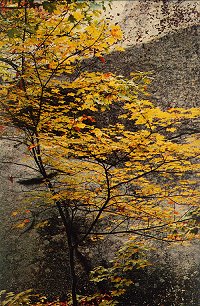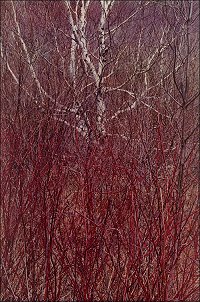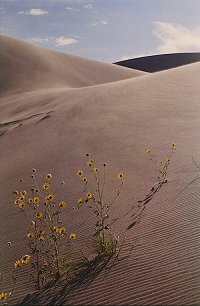
Still image from the television series Lost - Jack inside "The Sawn," an abandoned research facility
Maybe you don't watch the show (I certainly can't catch you up on this blog) but looking at the still above, you can get a sense of what Buckminster Fuller's once visionary geodesic dome has come to symbolize today. It is a failed experiment; a once gleaming but now clouded and deteriorating vision of the future.
If we are to consider Fuller's legacy through its material rather than conceptual remnants, the portrayal of the geodesic dome on Lost is an apt metaphor. Fuller's designs for housing and transportation have never been adopted on a wide scale and the geodesic dome along with most of his designs now seem like a relic of the past rather than a vision for the future. There are artists and scholars however, who are revisiting the spirit of Fuller's ingenuity and approach to design and adopting new ways of representing or implementing parts of his visionary concepts. In her essay, Smith looks at several contemporary artists who use conceptual, cross-disciplinary and highly experimental approaches that descend from Fuller.
In the map below, I have charted out some ways that the artists in Smith's article draw from Fuller's ideas. I have chosen to model my chart after the circulatory system because in our bodies arteries and veins work in concert to keep the "spaceship human" functioning. Fuller is, of course, the heart. Red arteries lead to ideas common among the artists and Fuller. Blue veins flow either circularly back to the heart - indicating that the work of art is in conceptual harmony with Fuller's systemic world view - or away from the heart - indicating that the work draws on an idea similar to Fuller's but does not fully embrace it. I left out Irit Batsry's work because I can't quite understand its form or content from the reading or my research so it is difficult for me to categorize.

(click to enlarge)
What is striking to me is that of all the artists, Pedro Reyes' Velotaxi is the only work that has been engineered for practical use. In the video below, Fuller discusses his motivations to engineer practical objects that improve humans ability to survive on our planet. His example is building a bridge across a canyon that can connect people with resources on the other side. This emphasis on pragmatic and optimistic design that could be adopted by the masses is not present in any of the works Smith discusses. Even Reyes' bike taxis are redesigned from existing technology that is already in use (haven't we all seen bike taxis downtown?) making him less a futurist and more a reformer.
I am not trying to place a higher value judgement on practical art objects but it is interesting to me that most works of contemporary art remain contemplative and cynical so that they reflect the sentiments of post-modernity but do not offer the utopian hopefulness that Fuller embraced. A resurgence of hope for the future and an embrace of progressive change came along with our most recent presidential campaign but it seems to have quickly fizzled out. I wonder if we will ever have the same hopeful sentiments for the future that Buckminster Fuller had. When I listen to him speak in the video above there is a sense of romanticism when he talks about a nature that provides sustenance for humans in the same way she (insert feminist rant here) provides for the hummingbird. Will this romantic and determined optimism ever return to art? If not, how might we become practical without being romantic or cynical?











